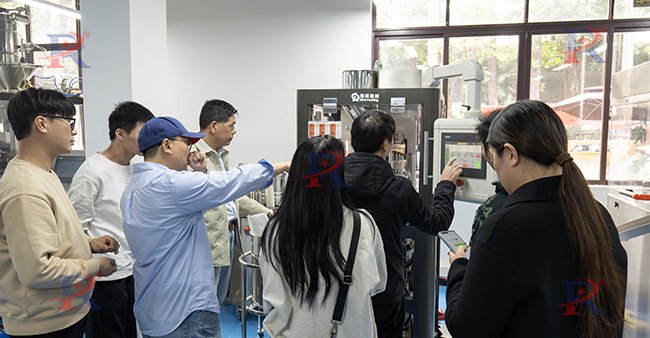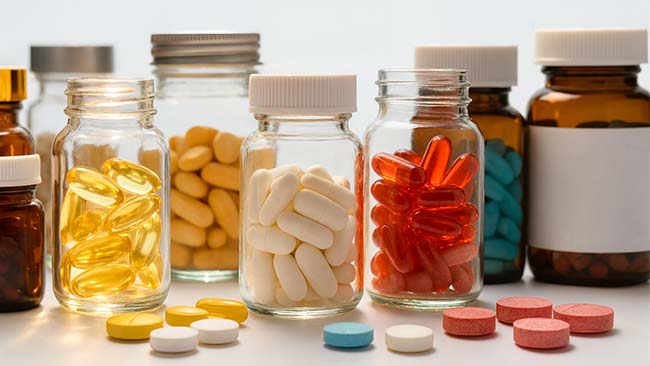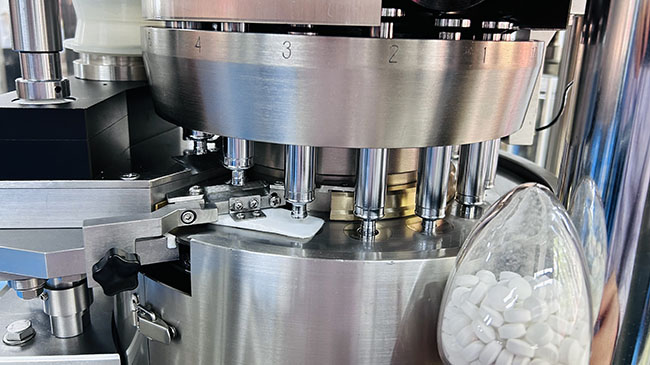Introduzione
Nell'industria farmaceutica, il packaging è fondamentale quanto la formulazione stessa. Non solo garantisce la sicurezza e l'integrità del prodotto, ma migliora anche l'esperienza del consumatore. Tra le diverse opzioni di confezionamento, il blister è diventato la scelta preferita sia dai farmacisti che dai produttori. Infatti, le statistiche mostrano che l'83% dei farmacisti preferisce confezionamento in blister rispetto ad altri tipi di imballaggio per la distribuzione dei farmaci.
Ma cosa rende esattamente il blister così apprezzato? In questo articolo, approfondiremo i motivi per cui il blister è la scelta preferita dai professionisti del settore farmaceutico e i vantaggi innegabili che offre sia ai consumatori che alle aziende farmaceutiche.
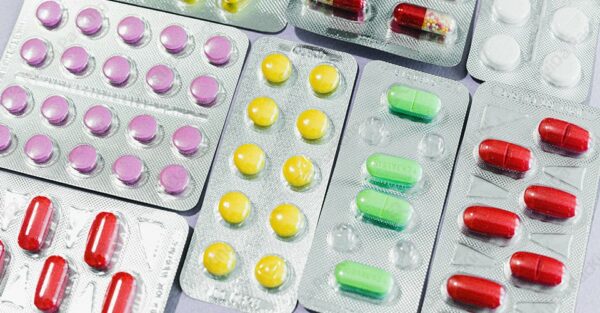
Comprendere il confezionamento in blister nel settore farmaceutico
Il blister è un tipo di imballaggio in plastica preformata che contiene cavità o tasche per contenere il prodotto, che si tratti di una compressa, una capsula o un altro tipo di farmaco. Il prodotto viene inserito in queste cavità e poi sigillato con un materiale di supporto, in genere un foglio di alluminio o plastica, per proteggerlo da contaminanti esterni come umidità, aria e luce.
Il confezionamento in blister è ampiamente utilizzato per il confezionamento monodose, in cui ogni dose di farmaco è sigillata singolarmente nel proprio alveolo. Questo offre diversi vantaggi sia per i farmacisti che per i consumatori.
Motivi alla base della preferenza per il confezionamento in blister dell'83%
1. Protezione superiore del prodotto
Uno dei motivi principali per cui i farmacisti preferiscono confezionamento in blister è il livello superiore di protezione che offre ai farmaci. I blister forniscono una barriera che protegge il prodotto da luce, aria, umidità e contaminazione, tutti fattori che potrebbero degradarne la qualità. Ad esempio, l'umidità può influire significativamente sull'efficacia di alcuni farmaci, causandone il deterioramento o la perdita di efficacia nel tempo. Utilizzando i blister, le aziende farmaceutiche possono garantire che il prodotto rimanga nel suo stato originale ed efficace fino al consumatore.
Il confezionamento in blister garantisce inoltre l'integrità dei farmaci durante il trasporto e lo stoccaggio. Grazie a robuste guarnizioni e camere ermetiche, il farmaco rimane protetto dagli agenti esterni durante tutto il percorso dal produttore alla farmacia e, infine, a casa del consumatore.
2. Controllo e precisione del dosaggio migliorati
I blister offrono un controllo preciso del dosaggio, essenziale nel settore farmaceutico. Quando i farmaci sono sigillati singolarmente in blister separati, si elimina il rischio di sovradosaggio o sottodosaggio, che può verificarsi con il confezionamento in grandi quantità, come i flaconi. Per i farmacisti, questo aspetto del confezionamento in blister offre maggiore sicurezza nella distribuzione dei farmaci, poiché garantisce che i pazienti ricevano la dose corretta senza errori.
Questo metodo di dispensazione controllata è particolarmente importante per i farmaci che richiedono dosaggi rigorosi, come antidolorifici, farmaci per la pressione sanguigna e altri farmaci critici. Ogni blister contiene una dose esatta, riducendo la possibilità di errore umano durante il processo di dispensazione.
3. Comodità e conformità
Sia per i farmacisti che per i pazienti, il confezionamento in blister offre una notevole praticità. Il formato blister individuale semplifica il monitoraggio dell'assunzione dei farmaci. Ad esempio, un paziente può semplicemente staccare un blister al giorno, visualizzando chiaramente se ha assunto il farmaco. Questa visibilità favorisce una migliore aderenza alla terapia, poiché i pazienti possono vedere chiaramente quante dosi rimangono nella confezione.
Inoltre, confezionamento in blister Viene spesso utilizzato per i farmaci che devono essere assunti secondo uno schema terapeutico specifico, come giornaliero, settimanale o mensile. Questo può contribuire a migliorare l'aderenza alla terapia, poiché la confezione ricorda ai pazienti di assumere il farmaco al momento giusto. Questo aspetto è particolarmente importante nella gestione delle malattie croniche, dove l'aderenza a lungo termine è essenziale per l'efficacia.
4. Caratteristiche di sicurezza e antimanomissione
L'imballaggio antimanomissione è uno dei motivi più convincenti per cui i farmacisti si fidano confezionamento in blisterIl sigillo di sicurezza garantisce che il prodotto non venga manomesso prima di raggiungere il consumatore. Per i farmaci, la confezione antimanomissione garantisce che il farmaco all'interno sia sicuro da usare e non sia stato alterato in alcun modo.
Il supporto in alluminio dei blister funge anche da deterrente per i prodotti contraffatti, un problema costante nel settore farmaceutico. È molto più difficile per i contraffattori replicare le precise proprietà di sigillatura e di sicurezza dei blister, rendendoli una scelta preferenziale per proteggere sia i pazienti che le aziende farmaceutiche dai rischi dei farmaci contraffatti.
5. Efficacia in termini di costi per le farmacie
Sebbene il confezionamento in blister possa avere un costo iniziale leggermente superiore rispetto al confezionamento in flaconi sfusi, può rivelarsi più conveniente a lungo termine per le farmacie. Ciò è dovuto al ridotto rischio di errori di somministrazione, che possono portare a costosi errori di dispensazione. La natura predosata dei blister aiuta inoltre le farmacie a evitare sprechi, garantendo che i farmaci vengano dispensati in quantità precise.
Inoltre, i blister consentono alle farmacie di risparmiare tempo nel processo di distribuzione. I farmacisti non devono contare manualmente le pillole, un'operazione che può richiedere molto tempo ed essere soggetta a errori. Possono semplicemente prendere un blister e consegnarlo al cliente, rendendo il processo di distribuzione molto più efficiente.
6. Maggiore soddisfazione e comodità del consumatore
Dal punto di vista del consumatore, il confezionamento in blister offre una praticità e una tranquillità senza pari. I consumatori apprezzano la facilità d'uso offerta dai blister: non c'è bisogno di misurare le dosi o di preoccuparsi di dimenticare una pillola. Per i pazienti anziani, i singoli scomparti sono particolarmente utili, poiché possono gestire facilmente una dose alla volta senza confusione.
I blister contribuiscono anche a migliorare l'esperienza d'uso complessiva, offrendo etichette chiare, apertura facile e protezione anti-goccia. Che si tratti di un anziano, di una persona con disabilità o di un lavoratore impegnato, i blister semplificano notevolmente l'accesso e l'assunzione dei farmaci.
Confezionamento in blister vs altri metodi di confezionamento
Confezionamento in blister vs bottiglie
Sebbene il confezionamento in flacone sia stato il metodo tradizionale per il confezionamento farmaceutico, presenta delle lacune rispetto al confezionamento in blister in diversi aspetti chiave. I blister sono più compatti e antimanomissione, il che li rende una scelta migliore per i farmaci controllati. Inoltre, i blister riducono il rischio di contaminazione da umidità e aria, a differenza dei flaconi, che possono essere aperti più volte, esponendo il contenuto a un potenziale deterioramento.
Confezionamento in blister vs confezionamento in strisce
Sebbene il confezionamento in strip sia simile al blister in quanto contiene anch'esso dosi singole, non offre le elevate proprietà protettive dei blister. I blister offrono una migliore tenuta e protezione contro i fattori ambientali, garantendo che il farmaco rimanga sicuro ed efficace più a lungo. Le confezioni in strip, d'altra parte, possono essere più convenienti per i farmaci a basso rischio che non richiedono elevati livelli di protezione.
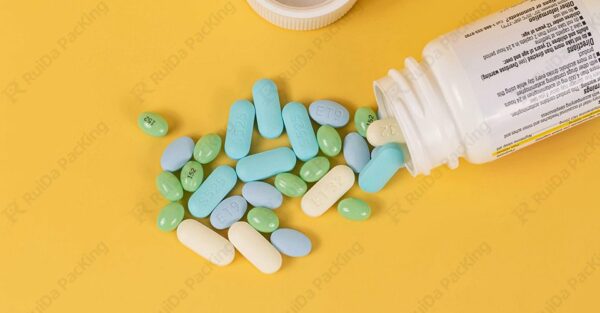
Come il confezionamento in blister supporta una migliore gestione dei farmaci
1. Confezionamento per diversi dosaggi
Il confezionamento in blister è incredibilmente versatile in termini di alloggiamento di vari tipi di farmaci, tra cui compresse, capsule, pastiglie e persino liquidi. Ogni farmaco è inserito in una cavità separata, facilitando il monitoraggio della dose da parte dei pazienti. Le opzioni di personalizzazione, come le perforazioni, consentono una dispensazione più semplice, il che è vantaggioso per garantire che i pazienti possano gestire il loro regime terapeutico in modo più efficace.
2. Ideale per farmaci monodose
Per i farmaci che richiedono un dosaggio preciso, i blister sono la soluzione ideale. Con un blister per ogni singola dose, i pazienti hanno la certezza di assumere la giusta quantità ogni volta. Questo è particolarmente importante per i farmaci potenti o che richiedono un rigoroso rispetto del dosaggio.
Il futuro del confezionamento blister nell'industria farmaceutica
Guardando al 2025, il confezionamento in blister continuerà a evolversi in risposta alle crescenti esigenze dell'industria farmaceutica. Possiamo aspettarci miglioramenti nei materiali utilizzati per i blister, come plastiche biodegradabili e tecniche di saldatura più efficienti. Inoltre, con l'aumento dell'automazione nel confezionamento farmaceutico, le macchine per il confezionamento in blister diventeranno ancora più efficienti, riducendo i costi di produzione e migliorando la precisione.
Le aziende farmaceutiche stanno inoltre investendo in innovazioni che integrano il confezionamento in blister con tecnologie digitali, come tag RFID ed etichette intelligenti, per migliorare ulteriormente la tracciabilità e la compliance dei pazienti.
Conclusione
In conclusione, il confezionamento in blister continua a essere la scelta preferita da farmacisti e aziende farmaceutiche grazie alla sua superiore protezione, praticità, economicità e alle caratteristiche di sicurezza. Con la continua evoluzione del settore, il confezionamento in blister continuerà a svolgere un ruolo chiave nel garantire la sicurezza e l'efficacia dei farmaci. Se cercate una soluzione di confezionamento che offra precisione, affidabilità e praticità per il consumatore, il confezionamento in blister è la scelta migliore.
